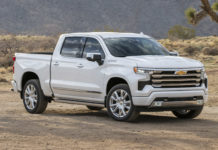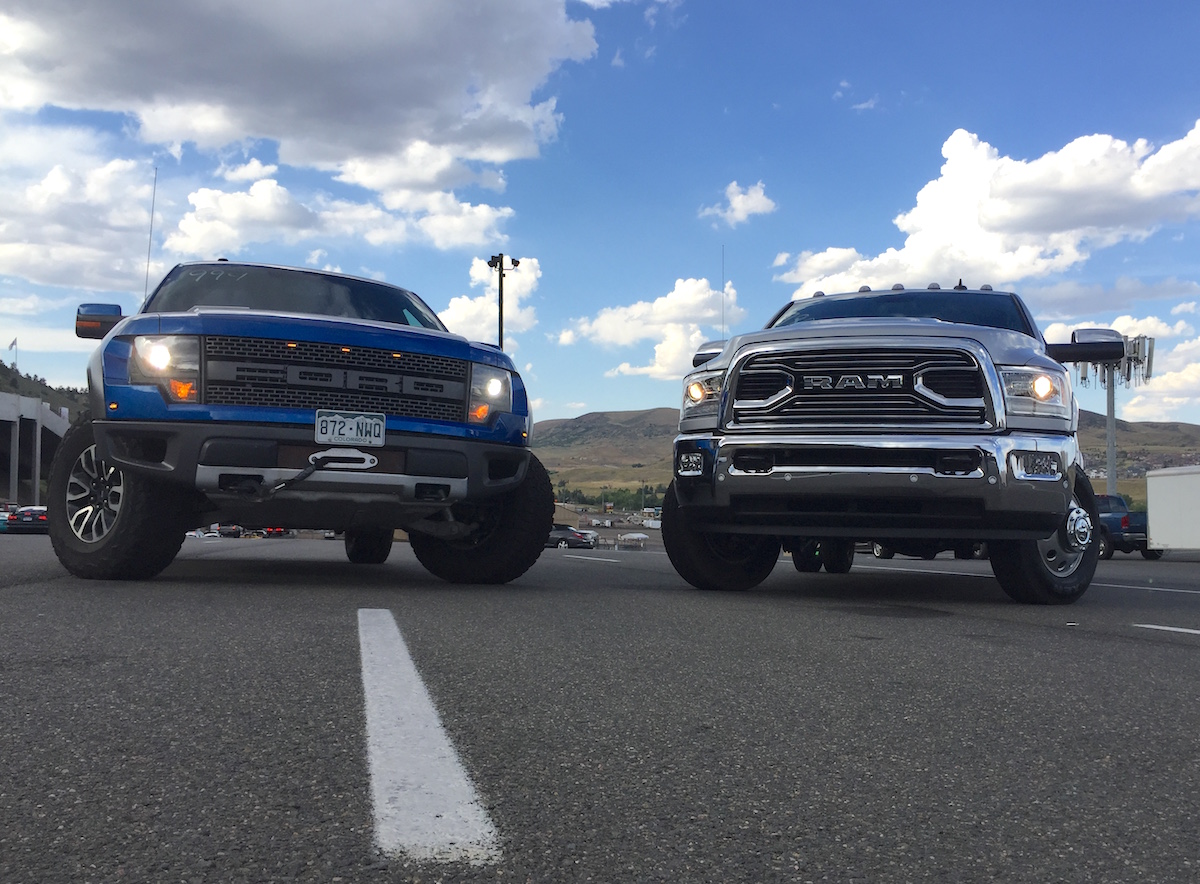
Publisher’s Note: At TFLTruck we’re lucky to have access to brand new trucks and vans direct from the manufacturer. This means we get to drive a lot of new trucks and vans every year, and in our testing we learn many things about these new vehicles. In this new column we will strive to share that hard-earned knowledge with you. All you have to do is ask TFLTruck and if we know the answer to your question. Best of all we will answer it right here and right now with this email sent to us by Ron.
Question:
Hi,
I’ve watched quite a few of your videos and I think you have a really good idea going but your execution is poor at times. In every video I’ve watched incorrect information is given regarding specs. I don’t have time to go back and re-watch the videos but the fact that you guys don’t even catch the misinformation when editing is really surprising.
I just watched your TX mashup video and I’m wondering a couple things:
– You said the GM is the only truck in the mashup with cylinder deactivation, Ram also has it on the 5.7.
– Nathan’s explanation on why the ram has less weight at 1:25 really makes no sense. I think what he was trying to say is that the GVWR for the Ram only allowed 9000# but that is not the explanation given.
– A Lariat is a Ford, Laramie is a Ram. There is no such thing as a Ram Lariat
– GM does offer a telescoping steering wheel and that truck you drove probably had it.
Ike testing: The reason this test appeals to me is because when I lived in Littleton I towed a 10K # 5th wheel across I70 numerous times with my Silverado LBZ (truck and trailer have been sold). Now I’m moving to Durango and plan to get a 1 ton gas or diesel truck to carry a 3000-3500 # slide in and tow a 5000# 7X14 enclosed trailer throughout CO, UT, NM, AZ, etc. Your high altitude tow test on a grade I’m very familiar with is really the ultimate test and is very useful information. I had a 2000 V6 Xterra, that empty, couldn’t go faster than 40mph at one point in the climb 🙂 Most people really understand this climb unless they have experienced it from the drivers seat.
– Driving some trucks over 70mph (Mr Truck driving the Ram 6.4) while maintaining a strict 60mph on others renders your times fairly useless. I understand the time is just to get an idea, and traffic causes other issues, but keeping as many variables between trucks the same makes more sense. It would be great to have an attentive driver who never goes over a predetermined mph during the entire pull for every truck.
– Why not do one run in tow mode floored like you currently do and another run in manual shift and shift the trucks when you feel they should shift? Watching the GM 6.0 and Ram 6.4 go so low in the rpms was painful. I think this would provide a more real world test situation. As it stands I can’t tell whether I would want the 6.0 or the 6.4 based on your testing method because I can’t tell if manual shifting would help either of the trucks. With the GMC diesel test there was no reason to manual shift 🙂
Thank you for taking the time to read my email. Hopefully it comes across as constructive criticism and not bashing because bashing is not my intention,
Thanks,
Ron
Thanks for the note Ron, we really appreciate the constructive criticism.
To answer your questions and criticism you have to understand a few behind the scenes facts:
1) It is exceedingly difficult to get competing trucks to test at the same time Colorado. Colorado is the backwater when it comes to car and truck press fleets. Colorado is a small state ( at least population wise) and Denver is a small market. This means that most of the truck manufacturers have zero test trucks in Denver for us to test most of the time. Honestly, It is a small miracle that we can produce any truck towing tests in Colorado. The big press fleets are in New York, Detroit Chicago and LA. BTW: Getting trucks from local dealers is not an option as we can not afford the liability of hooking tens of thousands of pounds to a truck that’s meant to be sold and not tested.
2) So when we have the chance to go on a new truck launch we make the most of the opportunity. The Mashup video that you referenced above was filmed and produced by myself at the press launch of the new F-150 in Texas last year. Ford flew Nathan and myself to Texas and setup competitive trucks with similar loads to compare to the new F-150. Now please keep in mind this was not done for us, but instead for print journalist who may want to compare how the new F-150’s towing ability to a Ram and the Chevy. We arrived at the program and I begged Ford to allow us to film and compare the three trucks for a towing Mashup video. This is no easy task given the fact that we only have a a couple hours to shoot and produce the video while 20 other automotive journalist also want to drive the trucks.
3) Ron please note that at this program we didn’t have photographer/cameraman or anyone else to help us shoot the video. It was just myself behind the camera and Nathan. This means that on the spot we have to 1) stage the three trucks, 2) shoot b-roll of all three trucks, 3) verify the weight being towed 4) gather, verify, and memorize all of the important facts and numbers for each truck including MPG, Axle Ratio, HP, M.S.R.P, Torque…you get the idea.
4) This video was shoot using 4 video cameras and a still camera. That means I have to mount all four cameras, make sure they are charged, rolling and don’t fall off the truck.
5) Once we’ve accomplished all of this we have to fight for the trucks as other journalist want to drive them and we can’t justify the extra time it takes to produce the video. So we beg for the trucks and plead for forgiveness when we hog them because we need to film them.
6) We also have to find a appropriate road that doesn’t have traffic or dangerous road conditions.
7) Once all this is accomplished, cameras are mounted, and facts are Googled, verified and memorized I get to present the video as we’re filming, driving and towing. That’s a lot of balls we’re juggling and inevitably we drop some like the ones you pointed out above.
8) Now you maybe wondering why we don’t catch the errors when editing. I edited this video as I have almost all of the TFL truck and car videos. We can’t afford fact checkers or editors. YouTube just does not pay enough. We also can’t afford to spend days painstakingly editing the video. The only way that we remain profitable is to produce lots of videos. We have a very small team and we all have to produce, shoot, edit and do it all over again the next time to keep the lights burning at TFL.
9) There is no doubt that the internet has made news and reviews free. For us that means we have to work 10 times as hard for a tenth of the revenue of the old traditional buff books (read truck magazines).
10) So I apologize for getting some facts wrong. I just hope you now understand what it takes to keep the lights on at TFL and you’ll understand why we sometimes get stuff wrong.
Thanks for the note Ron and thanks for watching!
Cheers, Roman Publisher TFLTruck

















![Which is More Reliable: 3.5L EcoBoost or 5.0L V8? [Reader Question] Second-generation 3.5-liter EcoBoost engine](https://tfltruck.com/wp-content/uploads/2016/05/Second-generation-35-liter-EcoBoost-engine.jpg)
![Which Silverado Engine to Get: 5.3L or 6.2L V8? [Ask TFLTruck] 2016 chevy silverado](https://tfltruck.com/wp-content/uploads/2015/10/2016-chevy-silverado-grille.jpg)
